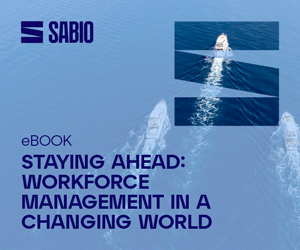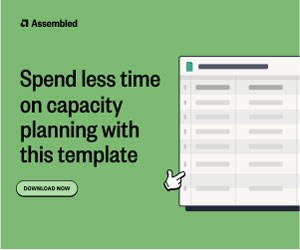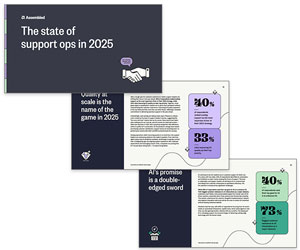To be as prepared and as organized as possible, every contact centre needs a schedule of the activities that are planned across the working day – and an absolute staple of this is the agent lunch break!
But where do you start with creating a lunch schedule that works for your customers and colleagues alike?
To find out, our Editor, Megan Jones, interviewed Irina Mateeva, WFM Transformation Consultant and Founder of RightWFM, to create this easy step-by-step guide – including top tips and considerations for a win–win outcome.
Your 5-Step Plan to Creating a Lunch Schedule That Works for Everyone
Here are 5 key steps to follow to create a robust lunch schedule for your contact centre agents – without compromising the customer experience:
1. Check Your Interactions Arrival Pattern
Before you do anything else, you’ll need a firm grasp of customer behaviour and, more specifically, when their calls and digital interactions are typically arriving at your contact centre.
You first need to analyse your call arrival pattern to pinpoint the best (and worst) times for scheduling your agents’ lunch breaks.
Why? If you don’t analyse your call and/or interaction arrival pattern, there’s a good chance you’ll create a random lunch break schedule that fails to align with customer demand.
So, you first need to analyse your call arrival pattern – specifically looking out for peaks and troughs in customer demand to pinpoint the best (and worst) times for scheduling your agents’ lunch breaks.
2. Explore What Might Work Within the Scope of Your Current Shift Patterns
Once you know what would work for your customers, you need to cross-reference this against what would work for your agents.
So, the next step is to look at your current shift patterns and explore where lunch breaks (of various times and lengths) could reasonably fit into these – particularly taking into consideration shift start and finish times, so lunch breaks aren’t too late or early in the working day.
Remember, you need to strike a balance between your customers’ and your agents’ needs, otherwise you’ll risk exhausting your workforce, which will be counterproductive in the long run.
For advice on building true flexibility into the contact centre, read our article: 32 Tips for Building Flexibility Into Contact Centre Schedules
3. Get Input From Your Frontline Teams
Don’t just make assumptions here! Talk to your frontline. That way, they won’t feel their schedules are being forced on them, but rather that they are actively involved.
For example, asking questions such as “Will these lunch breaks work for you, or is there something that we’re missing?” will open the conversation up around any positive tweaks and changes.
Of course, you won’t be able to say “yes” to everything, but an open door will give you lots of ideas, and also buy you a lot of goodwill in the process.
4. Don’t Overlook Your Legal and Contractual Obligations

When creating a new lunch schedule, always be sure to double-check the terms of existing contracts to avoid tensions in the team.
You shouldn’t deviate from this, no matter what the impact on your operation!
This can be easy to overlook if someone has, for example, worked in your contact centre for 5-10 years.
Sadly, this does happen, and when it does, people are often too scared to bring it up (as they don’t want to cause trouble or make a bad impression on a new manager), get fed up with the impact on their work/life balance, and HR only hear about it in the exit interview.
So take proactive steps to make sure this doesn’t happen to you!
The other thing that first-timers often miss out is compliance with employment law, so make sure you fully understand what is and isn’t legal when it comes to length and frequency of breaks – before finalizing your schedule!
5. Explore Where a Good WFM Solution Could Help
Finally, explore where a good WFM solution could help, as it’s not impossible to create and manage breaks in Excel, but it is more difficult.
Generally speaking, a good WFM solution can immediately highlight gaps in coverage where you can fit agent breaks in in the best possible way, as well as make it easier to manage breaks across the day. Many solutions also now empower agents to manage their breaks themselves.
Looking for a new WFM solution? Read our article: The Essential Guide to WFM – Key Features to Look For
How Long Is the Perfect Lunch Break?
So how long is the ideal lunch break? Is there a magic number that allows agents to feel well rested, keeps up with customer demand, and is easy for the planners to manage too?
Well… 30 minutes is often considered a good all-rounder, but there are several factors to take into account, including:
Personal Preferences
It really helps to get to know your team and adjust accordingly.
It often comes down to personal preferences, as some people simply need a longer break to fully recharge and become productive again in the afternoon, whereas others don’t need as long and would be far happier with a shorter working day.
This is where it really helps to get to know your team and adjust accordingly – particularly those who might need to go home and walk their dog on their lunch break, or take medication at the same time each day.
Operational Hours and Shift Length
The length of the lunch break should also be practical within your operational hours and shift length.
For example, if your shifts are fairly short, it probably won’t make sense for every agent to take a full hour, and vice versa, expecting agents to make do with the shortest (legally viable) lunch break when they are doing longer shifts will likely lead to burnout.
If you are looking to improve your contact centre opening hours, read our article: Finding the Ideal Opening Hours for Your Contact Centre
The Power of Goodwill

Mateeva
Working in a contact centre is a very difficult job with very few perks, so being as flexible and accommodating as possible to individual needs can really help you earn goodwill – so always keep this in mind when it comes to creating your lunch schedule.
After all, you aren’t just working with numbers… There are real people involved with emotions, needs, and personal commitments that must be taken into consideration for long-term success.
Thanks to Irina Mateeva, WFM Transformation Consultant and Founder of RightWFM, for contributing to this article.
If you are looking for more advice on agent breaks in the contact centre, read these articles next:
- Is It Best to Schedule or Free-Style Agent Breaks?
- The Best Ways to Deal With Lunch and Tea Break Requests
- Should Agents Be Allowed to Eat at Their Desks?
Author: Megan Jones
Reviewed by: Xander Freeman
Published On: 18th Jun 2024 - Last modified: 13th Aug 2025
Read more about - Workforce Planning, Irina Mateeva, Scheduling, Shift Patterns, Top Story, Workforce Management (WFM), Workforce Planning










































